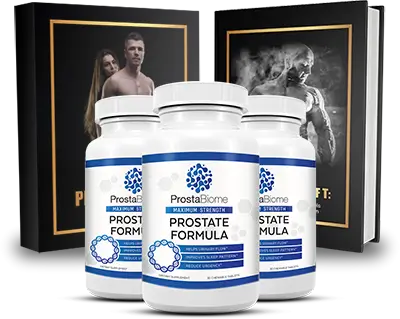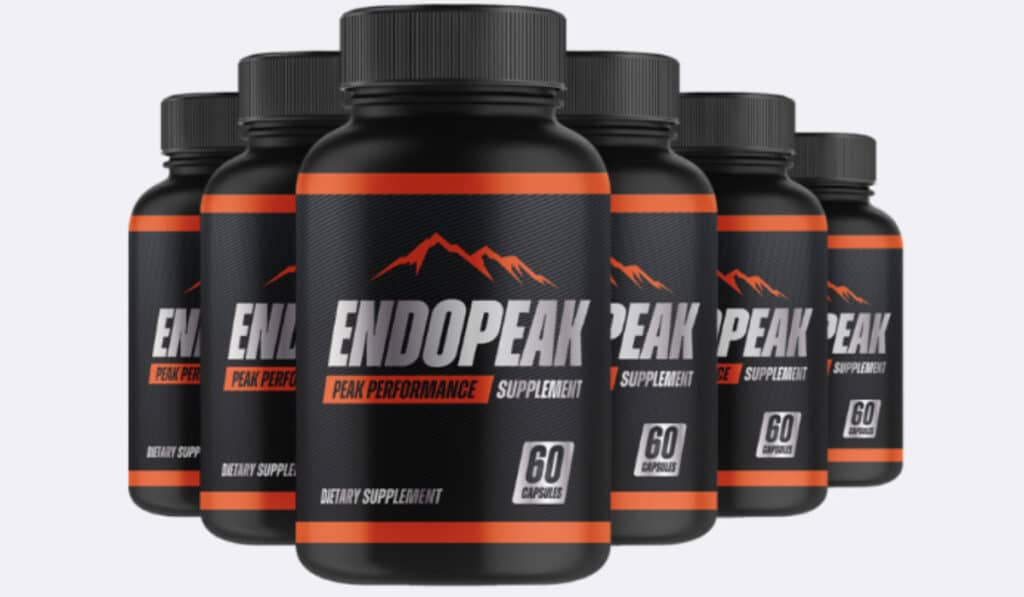Acoustic Waves for Natural Tissue Regeneration and Beyond
Imagine a healing process that taps into the body’s natural abilities, accelerating recovery without the need for invasive procedures. Low-intensity shockwave therapy, utilizing acoustic waves, stands at the forefront of such innovative treatments. Primarily known for its role in tissue regeneration, this technique has transcended its medical origins, finding applications in aesthetic medicine and beyond. By harnessing the power of sound waves, it offers a promising avenue for those seeking alternatives to traditional methods of treatment.
The essence of low-intensity shockwave therapy lies in its simplicity and effectiveness. Unlike high-energy waves that might cause discomfort or damage, these gentle acoustic waves stimulate the body’s own repair mechanisms. This approach not only minimizes potential side effects but also opens up a spectrum of therapeutic possibilities. From enhancing blood flow to breaking down calcifications, the scope of its benefits continues to expand, driven by ongoing research and clinical trials.
As we delve deeper into the nuances of this therapy, it becomes apparent that its potential extends far beyond the current applications. With each discovery, the boundaries of what can be achieved through acoustic wave therapies are pushed further, promising a future where non-invasive treatments become the norm for a wide array of conditions. This exploration into the realm of shockwave therapy not only highlights its current capabilities but also sets the stage for its evolution into new and uncharted territories of medicine and aesthetics.
Introduction to Low-Intensity Shockwave Therapy
Low-intensity shockwave therapy represents a groundbreaking approach to healing, characterized by its use of extracorporeal shock waves to promote the body’s natural regeneration processes. This non-invasive treatment method leverages acoustic waves to stimulate recovery in various tissues, including muscles, tendons, and bones. What sets it apart is its ability to initiate healing without the need for surgical intervention, offering a gentler alternative to those seeking relief from their ailments.
Patients undergoing this therapy often report experiencing minimal side effects and only mild discomfort during the procedure, making it an attractive option for many. The versatility of low-intensity shockwave therapy, capable of addressing a range of conditions from soft tissue injuries to bone fractures, underscores its potential as a significant tool in the arsenal of modern medicine. By tapping into the body’s inherent healing capabilities, it offers a pathway to recovery that is both natural and effective.
Defining Shockwave Therapy and Its Origins
Shockwave therapy, in its essence, encompasses a variety of wave therapies that utilize sound waves to induce healing in injured tissues. Its origins can be traced back to the 1980s, where it was first employed as a means for disintegrating kidney stones, known as lithotripsy. The success of this application paved the way for its exploration in other medical fields, leading to the discovery of its potential for promoting tissue regeneration and pain relief.
Over the years, the scope of shockwave therapy has broadened, with low-intensity options emerging as a viable alternative for treating musculoskeletal conditions. These gentler wave therapies harness the power of acoustic waves to stimulate the body’s natural healing processes, offering a non-invasive solution that avoids the complications and downtime associated with surgery. Through ongoing research and clinical application, shockwave therapy continues to evolve, solidifying its place in the landscape of therapeutic interventions.
How Acoustic Waves Promote Tissue Regeneration
The human body possesses an astonishing capacity for self-healing, and acoustic waves serve as a catalyst for this regenerative process, especially in the case of severe injuries. By transmitting sound waves deep into the tissue, this therapy stimulates the cells responsible for repair and growth. The energy from the waves enhances blood circulation and increases cell metabolism, creating an optimal environment for tissue regeneration.
This mechanism is particularly beneficial for repairing connective tissue, accelerating bone healing, and reducing chronic inflammation. As these acoustic waves interact with damaged tissues, they initiate a series of biological responses that lead to the restoration of function and the alleviation of pain. Through this process, patients can experience a significant improvement in their condition, often resulting in a quicker and more comprehensive recovery than traditional methods might allow.
The Evolution of Shockwave Therapy From Medical to Aesthetic Applications
Initially confined to the realm of medical treatment for conditions like kidney stones and orthopedic injuries, shockwave therapy has undergone a remarkable transformation. Its proven efficacy in stimulating natural healing processes has led to its adoption in aesthetic medicine, addressing issues such as cellulite, skin elasticity, and scar reduction. This expansion into aesthetic applications underscores the versatility of shockwave therapy and its potential to offer benefits beyond traditional medical treatments.
The ability of acoustic waves to promote collagen production and improve blood flow makes them an ideal choice for enhancing skin appearance and health. As research continues to uncover new applications, the boundaries of shockwave therapy’s capabilities are continually being redefined, offering hope and improved quality of life to individuals seeking both medical and aesthetic improvements. This evolution from a purely medical tool to a multifaceted therapeutic approach illustrates the dynamic nature of shockwave therapy and its growing significance in various fields of healthcare.
The Science Behind Acoustic Wave Therapy
Acoustic wave therapy operates on the principle of using sound waves to facilitate healing within the body, specifically targeting soft tissue injuries and conditions. This medical procedure capitalizes on the body’s natural repair mechanisms, employing low-intensity sound waves to stimulate tissue regeneration and repair. The science underlying this therapy is rooted in its ability to enhance blood circulation, promote cell proliferation, and ultimately lead to the restoration of healthy tissue.
The Mechanism of Action in Tissue Healing
The core of acoustic wave therapy’s effectiveness lies in its ability to incite the body’s intrinsic healing processes. By delivering targeted sound waves to injured or damaged tissues, it activates cellular repair and regeneration, paving the way for accelerated healing. This strategic stimulation not only promotes the resolution of inflammation but also enhances the strength and flexibility of the recovering tissues, thereby reducing the risk of future injuries.
Stimulating Cellular Repair and Angiogenesis
One of the key mechanisms through which acoustic waves facilitate healing is by stimulating cellular repair and promoting angiogenesis. As these waves penetrate deep into the tissue, they provoke a series of biological responses that include the release of growth factors and the recruitment of stem cells to the site of injury. This process not only accelerates the repair of damaged tissues but also leads to the formation of new blood vessels, enhancing tissue perfusion and oxygenation, which are critical for the regeneration of connective tissues.
This enhanced blood flow not only supplies the necessary nutrients and oxygen for tissue repair but also ensures the efficient removal of waste products from the area, further facilitating the healing process. The synergy of these effects contributes to a faster and more effective recovery, making acoustic wave therapy a powerful tool in the treatment of a wide range of conditions.
Promoting Collagen Production and Breaking Down Scar Tissue
Acoustic wave therapy is instrumental in promoting collagen production, a vital component of the tissue healing process. Collagen, the most abundant protein in the human body, plays a crucial role in maintaining the structural integrity of tissues. By stimulating its production, acoustic waves not only aid in the repair of damaged tissues but also contribute to the overall strength and elasticity of the area, facilitating tissue remodeling and reducing the formation of scar tissue.
Moreover, the energy delivered by the acoustic waves helps to break down existing scar tissue, a common hindrance to effective healing. This breakdown process is essential for restoring function and flexibility to the affected area, allowing patients to regain a fuller range of motion and experience less discomfort. Through these combined actions, acoustic wave therapy offers a comprehensive approach to tissue healing, underscoring its value as a non-invasive treatment option.
Comparing Acoustic and Shockwave Therapies: Differences and Similarities
While both acoustic and shockwave therapies utilize sound waves to induce healing, focused shockwave therapy distinguishes itself by targeting specific areas with higher precision and energy. This differentiation allows for a more concentrated treatment approach, often yielding quicker results in a shorter span of treatments. Despite these differences, both modalities share the underlying principle of stimulating the body’s natural healing processes, reflecting their complementary roles in the spectrum of non-invasive therapeutic options.
Table 1: Technical and Therapeutic Comparisons
In comparing acoustic wave therapy and focused shockwave therapy, a clear distinction emerges in terms of their technical specifications and therapeutic applications. Acoustic wave therapy, characterized by its broader, lower-intensity waves, is primarily used for treating a wide range of soft tissue conditions and promoting overall tissue regeneration. On the other hand, focused shockwave therapy employs high-intensity waves that are precisely directed at specific tissues or pathologies, making it highly effective for targeting localized issues such as calcifications or deep-seated pain syndromes.
Despite these technical differences, both therapies offer significant benefits, including reduced recovery times, minimal side effects, and the avoidance of surgical intervention. The choice between these therapies ultimately depends on the specific condition being treated, the desired outcomes, and the individual characteristics of the patient. By understanding the unique features and applications of each therapy, healthcare providers can tailor treatments to meet the specific needs of their patients, optimizing the healing process.
Clinical Applications and Benefits
The clinical applications of low-intensity shockwave therapy are diverse, covering a range of conditions from plantar fasciitis and tennis elbow to calcium deposits and bone healing. This non-invasive treatment method has demonstrated significant efficacy in managing various musculoskeletal disorders and chronic pain syndromes, offering patients a viable alternative to more invasive procedures. The benefits of shockwave therapy extend beyond its therapeutic effects, providing relief and improved function without the downtime associated with surgery.
A Spectrum of Conditions Treated with Shockwave Therapy
Shockwave therapy has proven particularly effective in treating conditions such as plantar fasciitis and tennis elbow, where traditional treatments may fall short. These applications highlight the versatility of shockwave therapy in addressing a wide range of musculoskeletal issues, providing patients with a non-invasive option that can lead to significant improvements in pain and functionality.
Musculoskeletal Disorders and Chronic Pain Conditions
Plantar fasciitis, a common cause of heel pain, is among the conditions where shockwave therapy has shown remarkable results. By targeting the inflamed fascia with acoustic waves, this treatment promotes healing and provides relief from pain, often allowing patients to return to their normal activities more quickly than with traditional treatments. The success of shockwave therapy in treating plantar fasciitis exemplifies its potential as an effective option for various musculoskeletal disorders and chronic pain conditions.
The benefits of this therapy extend to a wide range of other conditions, offering hope to those suffering from chronic pain that has been resistant to conventional treatments. By providing a non-invasive, yet powerful solution, shockwave therapy represents a significant advance in the field of pain management and musculoskeletal rehabilitation, paving the way for improved patient outcomes across a spectrum of conditions.
Sports Injuries and Their Recovery Process
Sports injuries, ranging from acute sprains and strains to chronic conditions like tendinitis, can greatly benefit from shockwave therapy. The therapy’s ability to accelerate healing and reduce pain makes it an invaluable tool for athletes looking to return to their sport as quickly as possible. By enhancing blood flow and stimulating tissue repair, shockwave therapy can significantly shorten the recovery time for sports-related injuries, enabling athletes to regain strength and mobility more efficiently.
Furthermore, by addressing the root cause of the injury and promoting the regeneration of healthy tissue, shockwave therapy helps prevent the recurrence of injuries, contributing to a more sustainable return to athletic performance. This aspect is particularly important for athletes who rely on their physical health for competition and training, making shockwave therapy an essential component of sports medicine and rehabilitation programs.
Advantages of Shockwave Therapy Over Traditional Methods
Shockwave therapy stands out from traditional treatment methods due to its minimal side effects and mild discomfort, allowing patients to return to daily activities more swiftly. This therapy utilizes radial waves to stimulate natural healing processes in the body, providing a unique advantage over more invasive procedures.
Non-Invasive Nature and Reduced Recovery Times
The non-invasive nature of shockwave therapy is a significant benefit, minimizing the risk of infection and complications associated with surgical interventions. Patients appreciate the ability to undergo treatment without the need for anesthesia, incisions, or hospital stays, leading to markedly reduced recovery times. This aspect ensures that individuals can quickly resume their daily routines and work, without the prolonged downtime that often accompanies conventional surgery.
Furthermore, the swift recovery period is coupled with the therapy’s effectiveness in treating various conditions. By avoiding the trauma of surgery, patients face fewer post-treatment complications and less overall discomfort, enhancing the appeal of shockwave therapy as a modern therapeutic option.
Advantages in Reducing Inflammation and Improving Mobility
One of the most notable advantages of shockwave therapy is its efficacy in managing chronic inflammation, a common underlying cause of pain and reduced mobility in many musculoskeletal conditions. By targeting inflamed tissues, the therapy promotes healing and pain relief, enabling patients to experience improved mobility and quality of life. This benefit is particularly relevant for individuals who have struggled with long-term inflammation and have found limited relief from other treatments.
In addition to reducing inflammation, shockwave therapy aids in restoring mobility by breaking down scar tissue and enhancing tissue regeneration. Patients often report significant improvements in movement and flexibility, which contribute to a better overall physical condition and the ability to engage in activities that were previously hindered by pain and stiffness.
Real-World Applications: Shockwave Therapy in Action
Shockwave therapy has proven its value across various fields, demonstrating remarkable outcomes in both clinical settings and everyday life. Its non-invasive treatment approach has been particularly beneficial for those seeking alternatives to surgery or long-term medication, offering a pathway to recovery that aligns with the body’s natural healing mechanisms.
From athletes recovering from injuries to individuals managing chronic pain, the real-world applications of shockwave therapy are vast and varied. This versatility underlines the therapy’s potential to transform treatment paradigms, providing a holistic and effective option for a wide range of conditions.
Patient Stories: Real Results and Testimonials
Personal testimonials highlight the transformative impact of shockwave therapy, with many patients reporting significant pain reduction and enhanced mobility. These stories often describe a journey from chronic discomfort to a renewed ability to engage in daily activities and hobbies without the limitations previously experienced. Such real-life outcomes offer compelling evidence of the therapy’s effectiveness, providing hope and encouragement to those considering it as a treatment option.
The narrative of recovery and improvement shared by patients underscores the therapy’s role in enhancing quality of life. These testimonials serve as powerful testimonials to the potential benefits of shockwave therapy, illustrating its capacity to offer a non-invasive solution to chronic and acute conditions alike.
From the Clinic to the Field: Shockwave Therapy in Sports Medicine
In the realm of sports medicine, shockwave therapy has emerged as a game-changer for managing knee pain and other injuries common among athletes. By accelerating the healing process, the therapy allows sports professionals and enthusiasts to return to their activities faster than traditional recovery methods would permit. This advantage is crucial in competitive sports, where time away from training and competition can have significant impacts.
The application of shockwave therapy in sports medicine underscores its versatility and efficacy. Athletes often report not only a reduction in pain but also an improvement in performance and strength. This dual benefit makes it an increasingly popular option in sports therapy, reflecting a broader trend towards non-invasive treatments in athletic care.
Understanding the Treatment Process
When considering shockwave therapy, it’s essential to understand what the treatment involves. Typically, gel is applied to the target area to facilitate the transmission of acoustic waves into the tissues. This non-invasive approach is one of the therapy’s key attractions, offering a painless and straightforward treatment process that requires no downtime.
The session length and frequency can vary depending on the condition being treated, but many patients experience noticeable improvements within just a few treatments. This efficiency is part of what makes shockwave therapy a compelling option for those seeking optimal results without the inconvenience of more invasive procedures.
What to Expect During Your Shockwave Therapy Session
During a shockwave therapy session, you’ll experience a series of acoustic waves directed at the affected area. These waves stimulate the body’s natural healing processes, encouraging tissue regeneration and pain relief. The sensation can vary from mild to moderate discomfort, but the procedure is generally well-tolerated, with many patients reporting immediate improvements in their condition.
The therapist will adjust the intensity of the waves according to your comfort level, ensuring a personalized treatment experience. Each session typically lasts between 15 to 20 minutes, making it a convenient option even for those with busy schedules.
Treatment Timelines: How Many Sessions for Optimal Results?
The number of shockwave therapy sessions needed for optimal results can vary, depending on the severity and nature of the condition being treated. Most patients will see significant improvements within three to six sessions, scheduled a week apart. This spacing allows the body’s natural healing processes to activate between treatments, enhancing the therapy’s effectiveness.
Your therapist will develop a personalized treatment plan based on your specific needs, ensuring that you receive the appropriate number of sessions to achieve the best possible outcome. Regular evaluations will help to monitor your progress and adjust the treatment plan as necessary.
Practical Considerations: Costs and Accessibility
The cost of shockwave therapy can vary widely depending on the provider, the location, and the number of sessions required. While it may be an investment, many patients find the long-term benefits of reduced pain and improved functionality well worth the expense. It’s advisable to consult with multiple providers to compare prices and services.
Accessibility to shockwave therapy is improving, with more clinics and practitioners offering this innovative treatment. However, availability may still be limited in certain areas, requiring some patients to travel for care. As awareness and demand for shockwave therapy grow, it is expected that accessibility will continue to increase.
Evaluating Candidacy for Shockwave Therapy
Deciding if shockwave therapy is the right choice for you hinges on several factors. Primarily, it’s essential to assess the nature of your condition and understand whether it falls within the range of issues that shockwave therapy effectively addresses. Conditions like tendinopathies, plantar fasciitis, and certain types of chronic pain have shown positive treatment outcomes when addressed with this modality. Consulting with a healthcare provider can offer insights into whether your specific condition might respond well to this therapy.
Another critical aspect to consider is your overall health status. Since shockwave therapy is non-invasive and has minimal side effects, it’s generally considered safe for a wide range of patients. However, certain medical conditions may affect your suitability for this treatment. It’s crucial to disclose your full medical history to your healthcare provider before proceeding, ensuring the therapy aligns with your health needs and goals.
How to Choose the Right Provider for Softwave Therapy
Selecting the right provider for softwave therapy is a crucial step towards achieving the best possible outcomes. Start by looking for clinics or practitioners who specialize in softwave therapy, with a strong emphasis on experience and positive patient testimonials. It’s beneficial to choose providers who have a comprehensive understanding of the therapy’s mechanics and can clearly explain how it will be tailored to address your specific needs.
Furthermore, consider the provider’s accreditation and the quality of the equipment they use. High-quality, modern equipment is essential for effective treatment, and providers should be certified and trained in the latest softwave therapy techniques. Don’t hesitate to ask about their success rates with cases similar to yours, as this can provide valuable insights into what you can expect from your treatment.
Questions to Ask Your Therapist Before Starting Treatment
Before starting shockwave therapy, it’s important to have a clear understanding of what the treatment entails. Ask your therapist about the specifics of the procedure, including how long each session lasts and the total number of sessions you may need. Inquiring about the type of shockwave equipment used and how the gel is applied during the procedure can also provide a clearer picture of what to expect during your sessions.
Additionally, discuss the potential outcomes and any side effects or discomfort you might experience. Understanding the post-treatment care and any activities or movements you should avoid can help you prepare for a smoother recovery. Your therapist should be able to provide clear answers and set realistic expectations for your treatment outcomes.
Beyond the Clinic: At-Home Care and Maintenance
After completing your shockwave therapy sessions, at-home care plays a vital role in maximizing the benefits of your treatment. Adhering to the post-treatment guidelines provided by your therapist can enhance recovery and improve overall results. This may include specific exercises, rest periods, and avoiding certain activities that could strain the treated area.
Maintaining a healthy lifestyle, including a balanced diet and regular physical activity, can further support your body’s healing process. Staying hydrated, getting adequate sleep, and managing stress levels are also crucial for optimal recovery. By following these aftercare recommendations, you can help ensure the long-term success of your shockwave therapy treatment.
Post-Treatment Care: Maximizing the Benefits of Shockwave Therapy
Following shockwave therapy, embracing post-treatment care is key to enhancing your recovery. The non-invasive treatment nature means you can usually resume daily activities quickly, but adhering to specific care instructions can significantly improve your outcomes. For instance, managing calcium deposits through recommended exercises and avoiding high-impact activities can aid in bone healing and alleviate pain associated with conditions like calcific tendinitis.
Moreover, continuing with gentle movements and stretches as advised by your therapist can prevent stiffness and support pain syndrome management. It’s also beneficial to apply ice or heat as directed to alleviate pain. These steps, combined with regular follow-up appointments to monitor your progress, are essential in maximizing the regenerative effects of shockwave therapy.
Lifestyle Adjustments for Enhancing Tissue Regeneration and Healing
To support tissue regeneration and accelerate the healing process, certain lifestyle adjustments can be highly beneficial. Incorporating a balanced diet rich in vitamins and minerals can provide the necessary nutrients for tissue repair. Foods high in antioxidants, protein, and omega-3 fatty acids are particularly beneficial in supporting healing and reducing inflammation.
Additionally, ensuring adequate rest and avoiding activities that could stress or further injure the treated area are crucial. Regular, moderate exercise, as recommended by your healthcare provider, can improve circulation and promote healing. By making these lifestyle adjustments, you can enhance the effectiveness of shockwave therapy and support your body’s natural healing processes.
The Road Ahead: Innovations and New Applications of Shockwave Therapy
Shockwave therapy is on the brink of significant advancements, with ongoing research exploring new applications and optimizing treatment protocols. Innovations in technology and methodology are expected to broaden the scope of conditions treatable with shockwave therapy, offering hope to patients with complex, chronic conditions that have been resistant to conventional treatments.
As we understand more about the biological mechanisms activated by shockwave therapy, personalized treatment protocols can be developed, enhancing the efficacy and reducing treatment times. The future of shockwave therapy looks promising, with the potential to revolutionize non-invasive treatments for a wide range of musculoskeletal and soft tissue disorders.
The Frontier of Shockwave Therapy: New Areas of Research
Exploratory research is pushing the boundaries of shockwave therapy, with clinical trials focusing on its application in new domains. Recent studies have begun to investigate the effects of shockwave therapy on neurological conditions, cardiac health, and wound healing, expanding beyond its traditional musculoskeletal applications. This research is crucial for validating the therapy’s effectiveness in new areas and understanding the optimal conditions for its use.
Appel B, a notable area of research, involves the use of shockwave therapy in treating erectile dysfunction, offering a potential non-invasive treatment option for sexual health issues. As these clinical trials progress, they promise to uncover new possibilities for shockwave therapy, potentially offering relief for conditions previously deemed challenging to treat.
Integrating Shockwave Therapy with Other Regenerative Medicine Techniques
The integration of shockwave therapy with other regenerative medicine techniques is an emerging trend that holds great promise for enhancing healing outcomes. By combining shockwave therapy’s mechanical stimulation with treatments like platelet-rich plasma (PRP) injections or stem cell therapy, the potential for tissue regeneration and repair is significantly amplified. This synergistic approach can accelerate the healing process, especially in challenging cases involving damaged tissues or slow-healing injuries.
Such combinations leverage the strengths of each modality, with shockwave therapy increasing cell permeability and improving blood flow, thereby enhancing the delivery and effectiveness of regenerative treatments. As research continues to evolve, these integrated approaches could redefine the standards of care in regenerative medicine, offering patients more effective, non-invasive options for recovery and healing.
Navigating Challenges and Limitations
While shockwave therapy offers numerous benefits, like any treatment, it comes with its challenges and limitations. Recognizing and addressing these can help manage expectations and improve patient outcomes. Accessibility and the need for multiple sessions can pose hurdles for some patients, necessitating a commitment in terms of time and financial resources. Additionally, the variability in response to treatment among patients underscores the importance of a personalized approach.
Understanding these challenges allows patients and providers to navigate the treatment process more effectively, making adjustments as needed to optimize outcomes. By addressing these issues proactively, the potential of shockwave therapy as a valuable treatment option is further solidified, ensuring it remains a viable choice for those seeking alternative, non-invasive therapies.
Addressing Common Concerns: Side Effects and Short-Term Discomfort
Shockwave therapy is generally well-tolerated, but like all therapeutic interventions, it can cause side effects and short-term discomfort for some individuals. Commonly reported side effects include temporary soreness, swelling, or bruising at the treatment site. These effects are typically mild and resolve on their own within a few days. Being prepared for these possible outcomes and understanding they are part of the healing process can help mitigate concerns.
Discussing potential side effects with your provider prior to treatment allows for a better understanding of what to expect and how to manage any discomfort. Employing simple measures such as applying ice or taking over-the-counter pain relief can be effective in managing these symptoms, ensuring a smoother recovery phase.
Financial Considerations and Insurance Coverage
The cost of shockwave therapy and its coverage by insurance are significant considerations for many patients. As shockwave therapy is still considered a relatively new treatment modality, insurance coverage can vary widely depending on the provider, location, and the specific condition being treated. It’s important for patients to research and understand their insurance policy’s stance on shockwave therapy and explore all potential costs involved in the treatment.
For those facing out-of-pocket expenses, discussing payment plans or alternative financing options with the treatment provider may offer a feasible solution. Being informed about the financial aspects of shockwave therapy can help patients make educated decisions about their care, ensuring they can access the treatment they need without undue financial strain.
Limitations and Contraindications: Who Should Avoid Shockwave Therapy?
While shockwave therapy is beneficial for many, there are specific contraindications and limitations to be aware of. Individuals with certain medical conditions, such as blood clotting disorders, infections at the treatment site, or severe circulatory disorders, may experience adverse effects from the therapy and are typically advised against it. Pregnant women and those with pacemakers should also avoid shockwave therapy due to potential risks.
Understanding these contraindications is crucial for ensuring patient safety and the efficacy of the treatment. Consulting with a healthcare professional to thoroughly evaluate your medical history and current health status before undergoing shockwave therapy is essential. This precautionary step helps prevent complications and ensures that the therapy contributes positively to your healing journey.
Conclusion: Embracing the Future of Non-Invasive Healing
Shockwave therapy represents a significant advancement in the field of non-invasive healing. Its ability to promote natural tissue regeneration through mechanical stimulation, without the need for invasive procedures, marks a paradigm shift towards less intrusive medical treatments. The use of high-energy sound waves to penetrate deep into the tissues of the body, stimulating the release of growth factors, and encouraging the formation of new blood vessels, showcases the therapy’s multifaceted approach to healing.
By reducing inflammation, improving blood flow, and effectively reducing pain, shockwave therapy offers a promising alternative to traditional treatments. Its applications, from musculoskeletal conditions to the enhancement of sexual health, highlight its versatility. As research continues to evolve, expanding the possibilities for treatment protocols and integrating shockwave therapy with other regenerative medicine techniques, we stand on the cusp of a new era in healthcare. An era where treatments are not only about managing symptoms but fundamentally enhancing the body’s natural healing capabilities.
Encouraging a Paradigm Shift Towards Less Invasive Treatments in Medicine
The medical community is steadily witnessing a transformation towards less invasive treatments, with low-intensity shockwave therapy leading the charge. This shift is not merely about reducing the physical intrusion of medical procedures but also about enhancing the body’s natural healing processes. Acoustic Wave Therapy (AWT) and Extracorporeal Shock Wave Therapy for erectile dysfunction are prime examples of how targeted, non-invasive treatments can stimulate endothelial cells and smooth muscle cells, improving the function of tissues without surgical intervention.
This paradigm shift encourages a fresh perspective on healing, one that values the body’s innate capacity for regeneration over more aggressive, traditional methods. By focusing on treatments that support the natural proliferation and repair of cells, healthcare is moving towards a future where recovery is quicker, less painful, and more in harmony with the body’s own mechanisms. The promise of restoring function and enhancing tissue health through innovative, non-invasive techniques like shockwave therapy is a beacon for the future of medical treatment.






